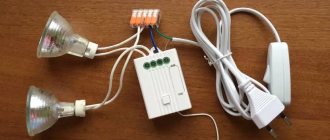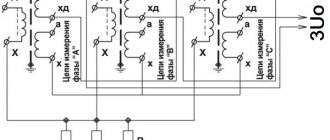Advantages of photo relay
Unlike contact-type control components, for example, electromechanical or induction relays, the described devices are distinguished by their durability. In addition, these devices based on field-effect transistors (the so-called MOSFET transistors) heat up less, and therefore can be used in long-term operating control circuits, for example, in photo relays for street lighting.
Metal Oxide Field Gate Transistor
The use of MOS transistors as a signal output device allows them to be used in solid-state relay circuits that operate on both alternating and direct current.
Subsequent comparison of the effectiveness of the product with other types of tracking devices for similar purposes can be performed using the following parameters:
- Minimum installation space required (less than relays with moving parts).
- Reliability (higher, since there are no moving contacts that wear out due to friction and electrical erosion).
- Energy consumption (less due to the absence of auxiliary components; battery-powered operation is possible).
- The switching intensity does not depend on the number of switchings, because there is no need for transmitting devices.
Photo relays are also advantageously characterized by the absence of noise during operation, high speed of switching control modes, and the absence of audible clicks during operation.
The compactness of a typical photo relay circuit for street lighting is illustrated in the figure:
Photocells with external photoeffect
Photocells with external photoelectric effect consist of a glass cylinder 1, from which air is pumped out:
The cathode in them is a part of the inner surface of the cylinder 2, covered with a photosensitive layer (mainly from alkali metal oxides C s Cs Cs, R b Rb Rb, K K K, N a Na Na), the cathode is illuminated through the transparent part of the cylinder 1. The anode is hemispherical metal spoon 3 placed in the center of the cylinder. The cathode and anode are connected to two pins 4, with the help of which the photocell is connected to the electrical circuit. To increase the photocurrent due to gas ionization, photocells are filled with an inert gas. The figure above shows samples of modern solar cells and their markings: STsV-4 (antimony-cesium vacuum) and TsG-3 (cesium gas-filled). At an operating voltage of 240 V, the sensitivity of the vacuum photocell is 8 × 10-5 A/lm.
Helpful Tips:
- to avoid false alarms, the photo relay must be installed in a place accessible to natural rays of light, but outside the range of artificial lighting; there should be no moving objects in front of the relay, for example, tree branches;
- when choosing a photo relay, you must ensure that the connected load corresponds to the rated power of the relay;
- the motion sensor must be installed in such a way that it is not exposed to direct rays of light from the sun or lamp;
- there should not be glass in front of the motion sensor, as it is an obstacle to infrared rays;
- For signaling, it is necessary to provide power backup in case of loss of the main source;
- video cameras installed in a visible place can have a psychological impact on a potential attacker;
- in the case of using wireless devices with autonomous power supply, it is recommended to install new batteries before the onset of winter;
- external sensors must be installed in such a way that they are protected from exposure to precipitation, mechanical damage and access by unauthorized persons;
- You should not install sensors with photocells near such powerful heat sources as stoves, fireplaces, heating radiators, etc.;
- Optical smoke detectors are not recommended to be placed in garages, near furnaces, near fans, or in damp and dusty areas.
List of used literature
- Voronchev T. A., Sobolev V. D. Physical foundations of electric vacuum technology. - M.: Higher School, 1967. - p. 217—220
- Tauts Ya. Photo- and thermoelectric phenomena in semiconductors. - M.: IL, 1962. - P. 141.
- Myakishev G. Ya., Bukhovtsev B. B., Charugin V. M. Physics. Grade 11. Textbook for general education organizations M.: Prosveshchenie, 2022. – P. 259 – 267.
- Elementary physics textbook. Textbook in 3 volumes/edited by Academician Landsberg G.S.: T.3. Oscillations and waves. Optics. Atomic and nuclear physics. – 12th ed. – M.: FIZMATLIT, 2001. P. 422 – 429.
- Ryvkin S. M. Photoelectric phenomena in semiconductors. - M.: Fizmatlit, 1963. - 494 p.










